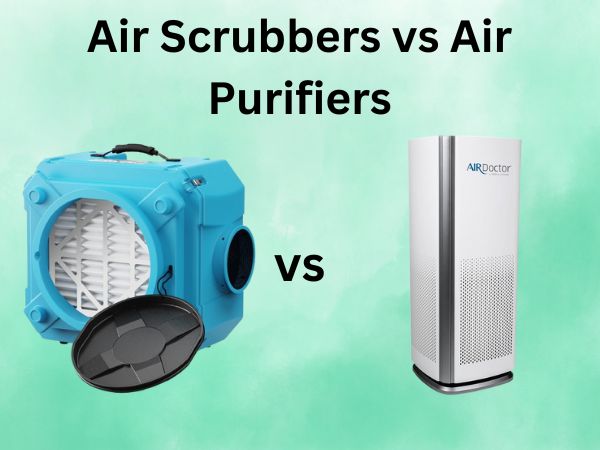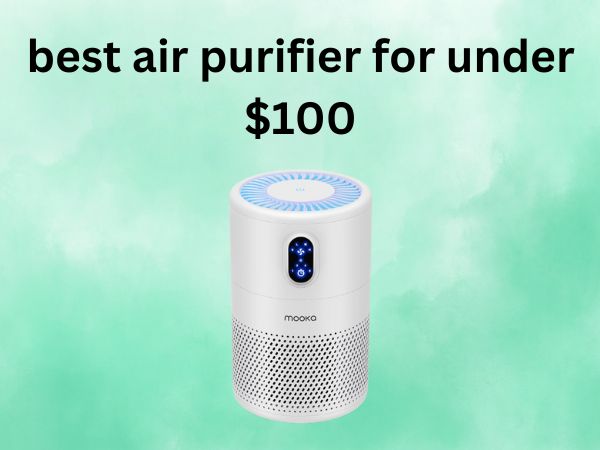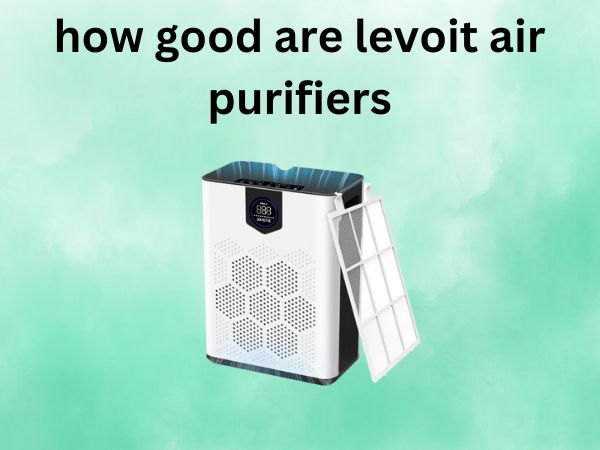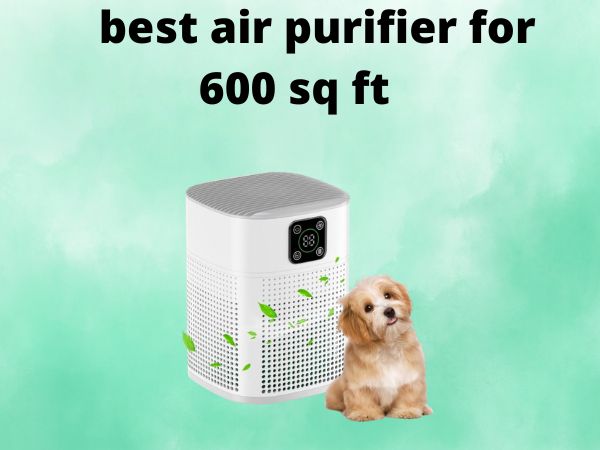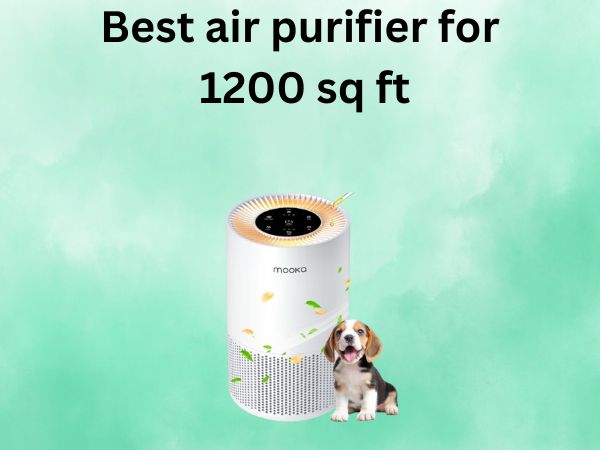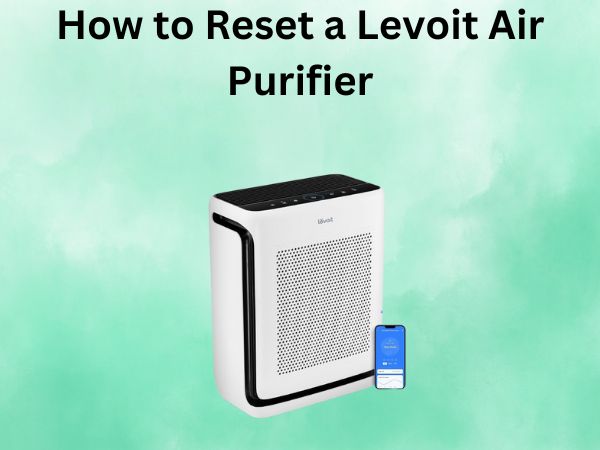Air Scrubbers vs Air Purifiers [Which Is Best For Your Indoor Air Quality?]
In our quest for cleaner, healthier homes, the debate between air scrubbers and air purifiers has become increasingly important. With indoor air often being more polluted than outdoor air, choosing the right air cleaning technology is crucial for your health and comfort. But what’s the difference between these two options, and which one is right for your specific needs? Let’s dive into the world of air quality improvement technologies to help you make an informed decision.
Table of Contents
Understanding the Basics of Indoor Air Quality
Before we compare air scrubbers and purifiers, let’s get a grasp on why indoor air quality matters so much.
Common Indoor Air Pollutants
Did you know that the air inside your home could be harboring a cocktail of invisible contaminants? From dust and pet dander to volatile organic compounds (VOCs) and even mold spores, these pollutants are constantly floating around us. Kitchen cooking, cleaning products, building materials, and even your furniture can release harmful particles into your air.
Some common indoor air pollutants include:
- Dust and dust mites
- Pet hair and dander
- Pollen and other allergens
- Mold spores
- Bacteria and viruses
- VOCs from paints, furniture, and cleaning products
- Smoke particles
- Cooking residue and odors
Health Impacts of Poor Indoor Air
Poor indoor air quality isn’t just an inconvenience—it can significantly impact your health. Have you ever experienced inexplicable headaches, fatigue, or respiratory issues at home? These might be your body’s way of telling you that your air needs attention.
Breathing contaminated air can lead to both short and long-term health problems, including:
- Irritation of the eyes, nose, and throat
- Headaches and fatigue
- Worsening of asthma and allergy symptoms
- Respiratory infections
- Long-term respiratory conditions
- Potential links to heart disease and certain cancers with prolonged exposure
With Americans spending approximately 90% of their time indoors, addressing air quality has never been more important. That’s where air purifiers and air scrubbers come into play—but they’re not the same thing.
What Are Air Purifiers?
You’ve probably seen air purifiers in homes, offices, or even advertised online. But what exactly are they?
How Air Purifiers Work
Think of an air purifier as a sieve for your air. Air purifiers typically use fans to draw in air from your room, pass it through one or more filters that trap contaminants, and then release the cleaned air back into your space. It’s a relatively simple concept with powerful results.
Most air purifiers are standalone units designed to clean the air in a single room. They’re plug-and-play devices that start working as soon as you turn them on—no complex installation required.
Types of Air Purifier Technologies
Not all air purifiers are created equal. Various technologies offer different benefits and target different types of pollutants.
HEPA Filtration
High-Efficiency Particulate Air (HEPA) filters are the gold standard in air purification. These dense filters can capture particles as small as 0.3 microns with 99.97% efficiency. To put that in perspective, a human hair is about 50-70 microns thick—HEPA filters catch particles far smaller than what the human eye can see.
HEPA purifiers excel at removing:
- Dust and pollen
- Pet dander
- Mold spores
- Most bacteria
- Some viruses (though not all)
Activated Carbon Filters
While HEPA excels at capturing particles, activated carbon filters are the champions of removing gases, odors, and VOCs. These filters contain millions of tiny pores that chemically attract and trap gaseous pollutants.
Activated carbon is particularly effective against:
- Cooking odors
- Pet odors
- Chemical fumes
- Smoke
- VOCs from household products
UV-C Light Purifiers
Some air purifiers incorporate ultraviolet light to kill biological contaminants. As air passes through the device, UV-C light damages the DNA of microorganisms, rendering them unable to reproduce.
UV-C technology targets:
- Bacteria
- Viruses
- Mold spores
- Other microorganisms
However, effectiveness depends on exposure time and light intensity, making this technology most effective when combined with other filtration methods.
Ionizers and Electrostatic Precipitators
These technologies give airborne particles an electrical charge, causing them to stick to surfaces (including the purifier’s collection plates) or clump together and fall to the ground.
While effective at removing particles from the air, some ionizers may produce ozone as a byproduct, which can be a respiratory irritant. Always choose models specifically designed to minimize ozone production.
What Are Air Scrubbers?
Air scrubbers might sound similar to purifiers, but they represent a different approach to air cleaning.
How Air Scrubbers Work
Unlike most air purifiers, air scrubbers are more active in their approach. Rather than simply filtering air that passes through them, many air scrubbers release cleaning agents into your environment that seek out and neutralize contaminants where they are—including on surfaces and in hard-to-reach areas.
Many residential air scrubbers are installed directly into your HVAC system, working alongside your heating and cooling to clean air throughout your entire home, not just in a single room.
Types of Air Scrubber Technologies
Air scrubbers come in several varieties, each with distinct advantages.
Wet Scrubbers
Primarily used in industrial settings, wet scrubbers use liquid (usually water) to remove contaminants from air streams. They’re particularly effective for removing gases, vapors, and larger particles.
The contaminated air passes through a chamber where it contacts the scrubbing liquid, which captures the pollutants. These systems are typically too large and complex for residential use.
Dry Scrubbers
Instead of liquids, dry scrubbers use solid materials to remove gaseous pollutants through chemical reactions. They’re commonly used in industrial settings to remove sulfur dioxide and other acid gases from exhaust streams.
PCO Technology
Photocatalytic Oxidation (PCO) technology is commonly found in residential air scrubbers. This process uses UV light and a catalyst (usually titanium dioxide) to create hydroxyl radicals and superoxide ions—highly reactive molecules that break down organic contaminants.
The ActivePure technology (used in products like Air Scrubber by Aerus) is a popular variation of PCO technology. It releases hydrogen peroxide molecules into the air, which actively seek out and neutralize pollutants both in the air and on surfaces.
Key Differences Between Air Scrubbers and Air Purifiers
Now that we understand what each technology brings to the table, let’s directly compare them across several important factors.
Installation and Portability
Air Purifiers:
- Typically standalone, portable units
- Plug-and-play operation—no installation required
- Can be moved from room to room as needed
- Limited to cleaning air in their immediate vicinity
Air Scrubbers:
- Often integrated into existing HVAC systems
- Usually require professional installation
- Permanent fixtures that clean air throughout the entire home
- Not portable once installed
Coverage Area and Effectiveness
Air Purifiers:
- Clean air in a single room (typically 300-1,500 square feet depending on the model)
- Most effective in the room where they’re located
- May need multiple units to cover an entire home
- Primarily clean air that passes through the unit
Air Scrubbers:
- When installed in HVAC systems, can clean air throughout an entire home
- Active technologies can reach air and surfaces in multiple rooms
- Proactively distribute cleaning agents rather than just filtering passing air
- Generally more comprehensive coverage than standalone purifiers
Maintenance Requirements
Air Purifiers:
- Require regular filter replacements (typically every 3-12 months)
- Some models have washable pre-filters
- Relatively simple maintenance that homeowners can handle
- Lower long-term maintenance costs with models using washable filters
Air Scrubbers:
- May require less frequent maintenance than purifiers
- Some models have longer-lasting components
- Professional servicing may be needed for HVAC-integrated systems
- Initial professional installation adds to upfront costs
Cost Considerations
Air Purifiers:
- Lower initial investment ($50-$1,000+ depending on size and features)
- No installation costs
- Ongoing filter replacement costs ($20-$200 annually)
- Energy consumption varies by model and usage
- Multiple units may be needed for whole-home coverage
Air Scrubbers:
- Higher initial investment ($500-$2,000+)
- Professional installation costs ($300-$600)
- Potentially lower ongoing maintenance costs
- Added energy costs to HVAC system are typically minimal
- One system can cover the entire home
When to Choose an Air Purifier
With the differences laid out, let’s explore when an air purifier might be your best option.
Ideal Scenarios for Air Purifiers
Consider an air purifier when:
- You’re renting and can’t make permanent modifications
- You need to target air quality in specific rooms (like bedrooms or a home office)
- You want the flexibility to move your air cleaning solution between spaces
- You’re on a tighter budget for upfront costs
- You don’t have a central HVAC system
- You need a quick solution for immediate air quality concerns
- You want to supplement existing air cleaning systems
Air purifiers shine in situations where you need targeted, flexible air cleaning without permanent installation. They’re perfect for apartments, rental homes, or for people who want to focus on improving air quality in specific high-use areas.
Limitations of Air Purifiers
While air purifiers offer many benefits, they do have some limitations:
- Limited to cleaning air that passes through the unit
- Typically don’t clean surfaces
- Limited coverage area
- Ongoing filter replacement costs
- Some models can be noisy
- Takes up floor or counter space
- Multiple units needed for whole-home coverage
When to Choose an Air Scrubber
Air scrubbers serve different needs and excel in different scenarios.
Ideal Scenarios for Air Scrubbers
An air scrubber might be your best bet when:
- You want whole-home air purification
- You have concerns about both airborne and surface contaminants
- You have a central HVAC system where it can be installed
- You’re willing to make a larger upfront investment for long-term benefits
- You want a more permanent, integrated solution
- You have specific concerns about odors, VOCs, or microbial contaminants
- You prefer a solution that requires less regular maintenance
- You or family members have severe allergies or respiratory issues
Air scrubbers are particularly valuable for homeowners planning to stay in their homes long-term, families with severe allergies or asthma, or anyone wanting comprehensive air cleaning throughout their entire living space.
Limitations of Air Scrubbers
Air scrubbers also have their drawbacks:
- Higher upfront costs
- Professional installation required
- Not portable
- Not suitable for renters or temporary living situations
- Some technologies may produce trace amounts of ozone or other byproducts
- Limited effectiveness in homes without forced-air HVAC systems
Can You Use Both Systems Together?
The short answer is: absolutely! In fact, using both technologies can provide more comprehensive air quality improvement than either option alone.
A whole-home air scrubber can provide baseline air cleaning throughout your entire space, while strategically placed air purifiers can give an extra boost in high-use areas or rooms where family members with respiratory sensitivities spend most of their time.
This combination approach might be especially valuable in:
- Homes with pets or allergy sufferers
- Houses with mixed concerns (some rooms needing more intensive filtration)
- Spaces with specific pollutant issues in certain areas
- Homes with both central HVAC and some unconditioned spaces
- Situations where maximum air quality is desired regardless of cost
Making the Right Choice for Your Home or Business
With so many options available, how do you decide what’s best for your specific situation?
Assessment Factors to Consider
When evaluating your air quality needs, ask yourself:
- What specific air quality concerns do you have? (allergies, odors, VOCs, etc.)
- Do you own or rent your home?
- Do you have a central HVAC system?
- What’s your budget for both initial purchase and ongoing maintenance?
- How important is portability?
- Do you need whole-home coverage or just specific rooms?
- Are surface contaminants a concern along with airborne particles?
- Do you or family members have respiratory conditions that require maximum air cleaning?
Your answers to these questions will help guide you toward the right solution.
Professional Consultation Tips
For the most accurate assessment of your air quality needs:
- Consider hiring an indoor air quality professional for testing
- Consult with HVAC specialists about compatible air scrubber options
- Read consumer reviews focused on issues similar to yours
- Look for third-party certifications and testing results
- Ask about noise levels, energy consumption, and maintenance schedules
- Inquire about warranty coverage and expected lifespan
Frequently Asked Questions
1. Do air scrubbers eliminate all mold and bacteria?
While air scrubbers can significantly reduce mold spores and bacteria in your home’s air and on surfaces, they cannot eliminate 100% of these contaminants. Air scrubbers using PCO technology can destroy many microorganisms, but for serious mold problems, you’ll need professional remediation along with air cleaning technology.
2. Can air purifiers remove cooking smells and pet odors completely?
Air purifiers with quality activated carbon filters can dramatically reduce cooking and pet odors, but their effectiveness depends on the filter size, the strength of the odor, and the unit’s airflow rate. For persistent or strong odors, you might need larger units or models specifically designed for odor elimination.
3. How long should I run my air purifier each day?
For optimal results, most air purifiers should run continuously. Many modern units are energy-efficient and designed for 24/7 operation. If continuous operation isn’t practical, prioritize running your air purifier during hours when the room is occupied and for at least 2-3 hours afterward.
4. Will an air scrubber installed in my HVAC system increase my energy bills significantly?
Most residential air scrubbers have minimal impact on energy consumption. While there might be a slight increase in your energy bill due to additional resistance in the airflow, this increase is typically very small—often just a few dollars per month—making it a cost-effective solution for whole-home air cleaning.
5. Can air purifiers or air scrubbers help protect against airborne viruses?
Both technologies can help reduce airborne viruses, but neither provides complete protection. HEPA air purifiers can capture many virus particles, while air scrubbers with PCO technology may inactivate some viruses. However, these should be considered just one part of a comprehensive approach to reducing disease transmission, alongside proper ventilation, hygiene practices, and following public health guidelines.
Conclusion
The choice between air scrubbers and air purifiers isn’t about which technology is better—it’s about which one better meets your specific needs. Air purifiers offer flexibility, lower upfront costs, and targeted room-by-room filtration. Air scrubbers provide whole-home coverage, surface and air cleaning, and a more permanent solution with potentially lower maintenance needs.
For renters, those on tighter budgets, or people needing portable solutions, air purifiers typically make more sense. For homeowners looking for comprehensive, whole-home air quality improvement with less ongoing maintenance, air scrubbers often provide greater long-term value.
Remember that indoor air quality is a crucial but often overlooked aspect of a healthy home environment. Whether you choose an air purifier, an air scrubber, or a combination of both, taking steps to clean your indoor air is an investment in your health and wellbeing.

